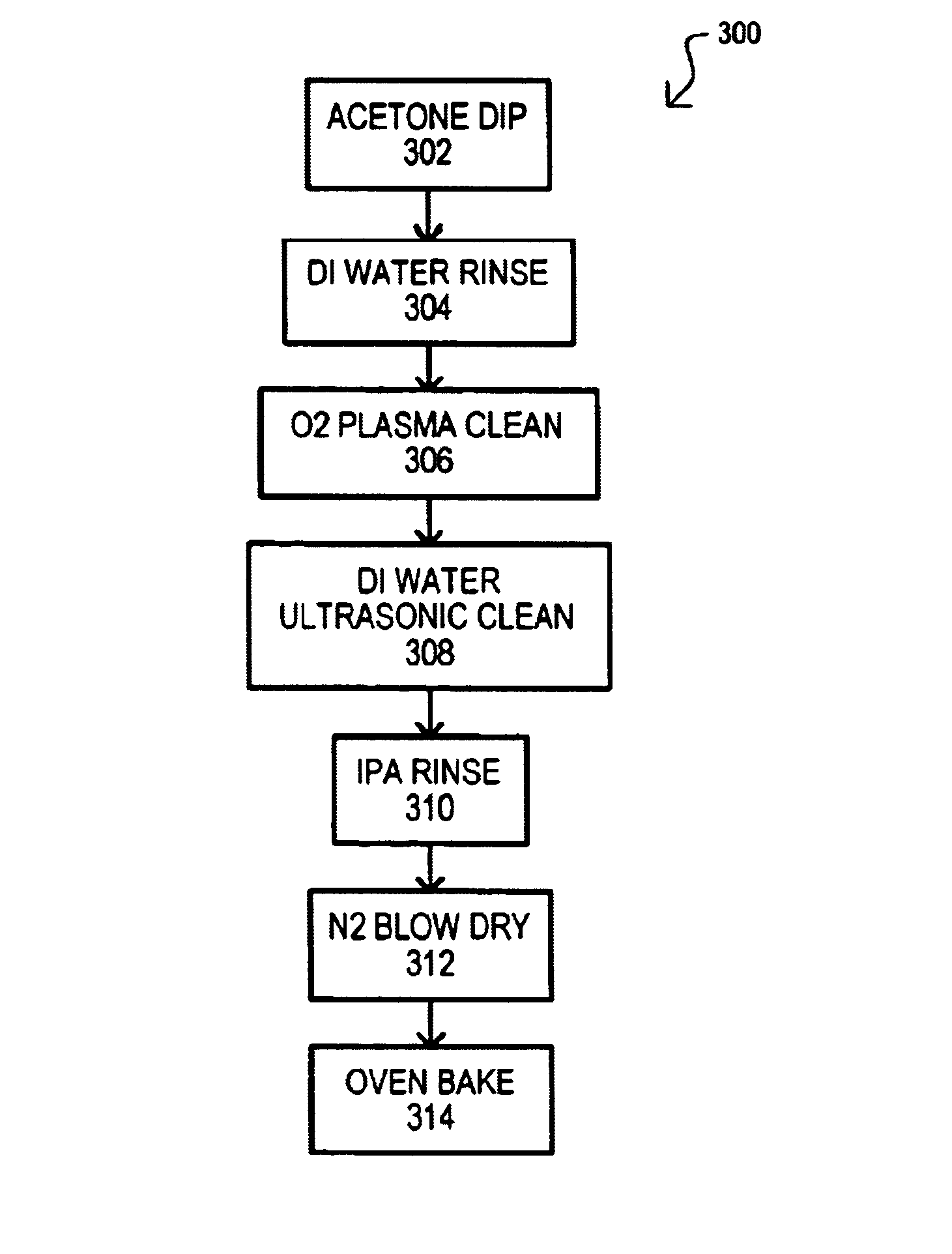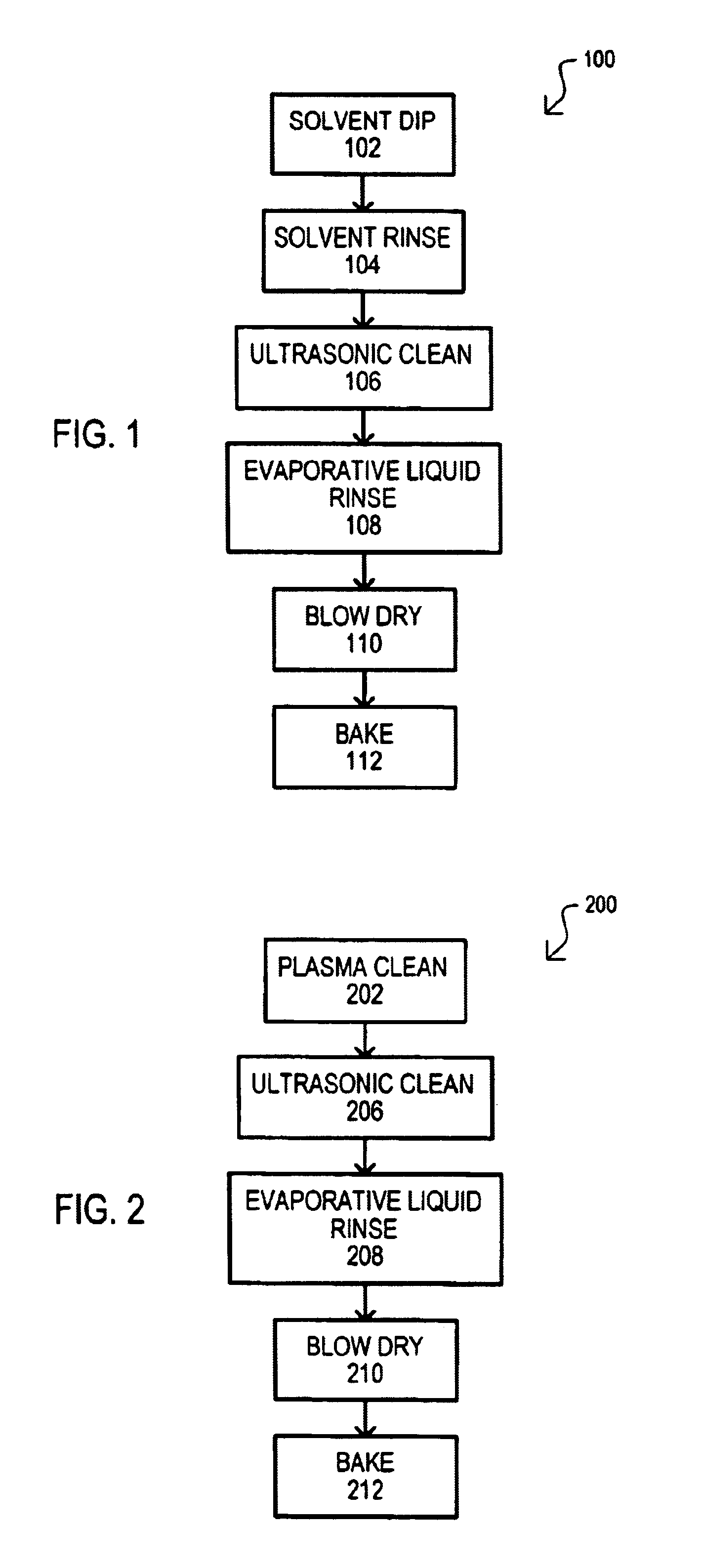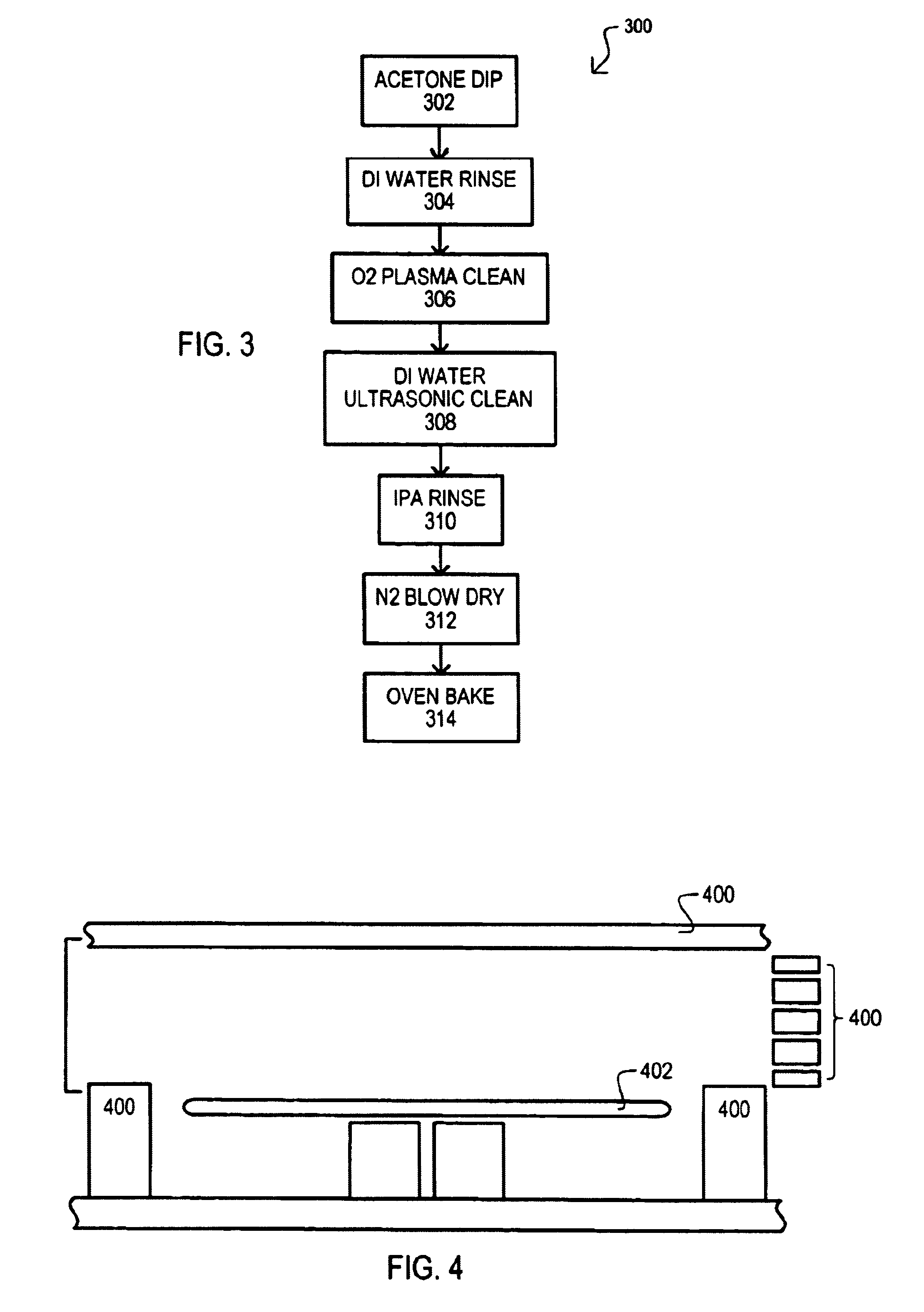Method for cleaning plasma etch chamber structures
a technology of plasma etching and chamber structure, which is applied in the direction of cleaning hollow articles, using liquids, chemistry apparatus and processes, etc., can solve the problems of affecting the surface of the chamber part, forming defects, and redistributing etched materials, and achieves a high degree of selectivity
- Summary
- Abstract
- Description
- Claims
- Application Information
AI Technical Summary
Problems solved by technology
Method used
Image
Examples
third embodiment
A third embodiment will now be described with reference to FIG. 3. A third embodiment may include a method of cleaning redistributed etch mask material from plasma reactor chamber parts. More particularly, a third embodiment shows method of cleaning polymer-based photoresist from quartz chamber parts used in reactive plasma etching.
A third embodiment is designated by the general reference character 300 and may include an acetone dip (step 302). Acetone dip 302 can be a photoresist polymer solvent and may dissolve redistributed photoresist polymers formed on chamber parts. A step 302 may include filling a receptacle with acetone. Quartz chamber parts may then be submerged in acetone for a period of time that may be greater than 2 hours, less than 48 hours, even more particularly from about 6-24 hours.
In this way a solvent dip may be used to remove redistributed material from plasma reactor chamber parts.
A third embodiment 300 may further include a de-ionized (DI) water rinse (step 30...
PUM
| Property | Measurement | Unit |
|---|---|---|
| RF) power | aaaaa | aaaaa |
| temperature | aaaaa | aaaaa |
| temperature | aaaaa | aaaaa |
Abstract
Description
Claims
Application Information
 Login to View More
Login to View More - R&D
- Intellectual Property
- Life Sciences
- Materials
- Tech Scout
- Unparalleled Data Quality
- Higher Quality Content
- 60% Fewer Hallucinations
Browse by: Latest US Patents, China's latest patents, Technical Efficacy Thesaurus, Application Domain, Technology Topic, Popular Technical Reports.
© 2025 PatSnap. All rights reserved.Legal|Privacy policy|Modern Slavery Act Transparency Statement|Sitemap|About US| Contact US: help@patsnap.com



